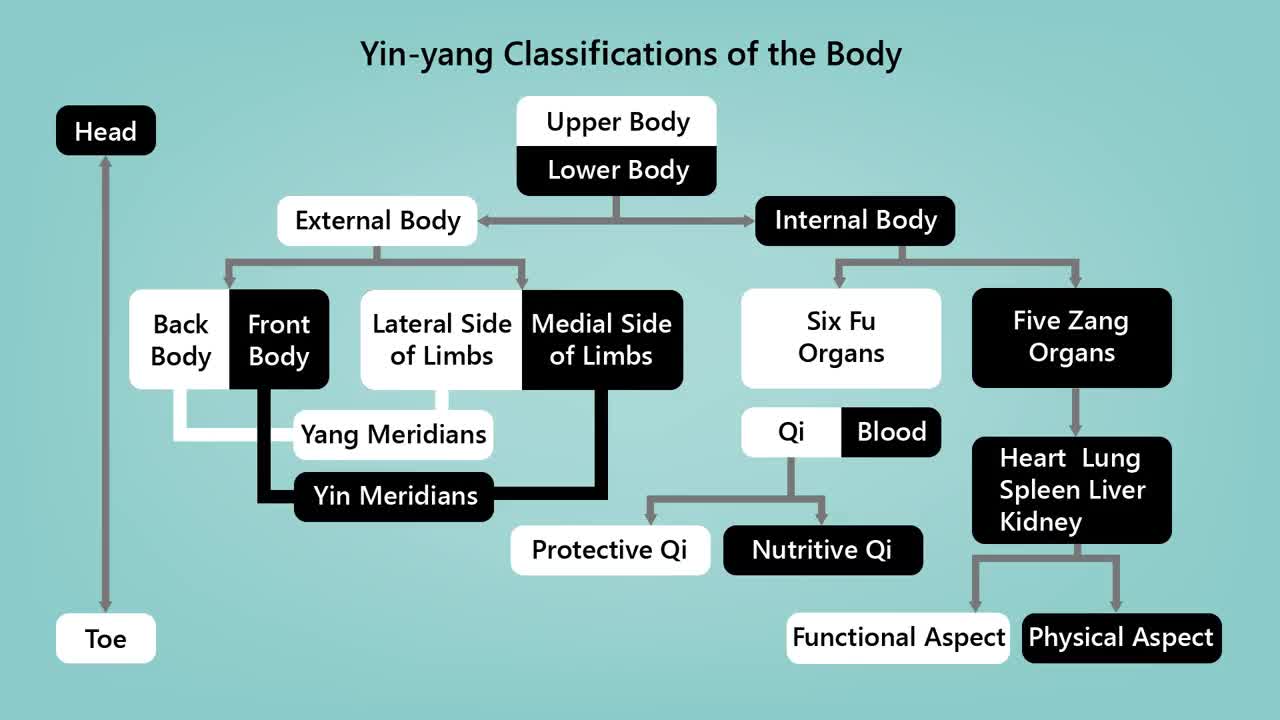Premium Only Content

The Theory of Zang-fu Organs (Part 1)
In Chinese medicine, Zang-fu organs of human body can be
classified into two major groups. The "five Zang organs" and
the "six Fu organs". The five Zang organs include the Heart,
the Liver, the Spleen, the Lung and the Kidney. The common characteristics
of these five Zang organs are in preserving the vital substances. The six Fu organs are the Gallbladder,
the Stomach, Large Intestine, the Small Intestine,
The Urinary bladder and the Sanjiao. Their basic functions are transporting and
digesting water and food. The human body is an integrated whole. All its tissues and
structures are organically connected. And may be classified into two
opposite aspects of Yin and Yang. When discussing Yin-yang and their relationship to the Chinese medicine
perspective of the body's internal organs. The five Zang organs Heart, Liver,
Spleen, Lung and Kidney belongs to Yin. Their functions of preserving vital
substances tend to be stable. The six Fu organs, Gallbladder, Stomach, Large intestine, Small intestine,
Urinary bladder and Sanjiao belong to Yang. Their functions of transporting and
digesting water and food tends to be active. The relationship between Yin and Yang
also remains constant among the five Zang organs. The Heart and Lung, located in the Upper-jiao,
are more Yang in nature. Because of their location, is anatomically higher than
Liver and Spleen of the Middle-jiao. Or the Kidney, which is found in
the Lower-jiao of the human body and is considered the most Yin in nature. When discussing Yin-yang and
how they relate to all the organs, the functional aspect of the organs is yang
and the substantial aspect is Yin. Further more, each of the Zang and Fu organs can be further
divided into Yin and Yang. For example, Heart-yin and Heart-yang. Kidney-yin and Kidney-yang,
Stomach-yin and Stomach-yang etc. When applying the concept of Yin-yang
to the substances of Qi and Blood in the human body. Qi is Yang because it performs a kinetic,
functional role in the human body. While blood is more material and
physical in nature.
-
 10:02
10:02
MichaelBisping
14 hours agoBISPING: "Was FURY ROBBED?!" | Oleksandr Usyk vs Tyson Fury 2 INSTANT REACTION
7.27K7 -
 8:08
8:08
Guns & Gadgets 2nd Amendment News
2 days ago16 States Join Forces To Sue Firearm Manufacturers Out of Business - 1st Target = GLOCK
59.5K57 -
 10:17
10:17
Dermatologist Dr. Dustin Portela
1 day ago $7.81 earnedOlay Cleansing Melts: Dermatologist's Honest Review
69.8K1 -
 1:02:20
1:02:20
Trumpet Daily
2 days ago $28.93 earnedObama’s Fake World Comes Crashing Down - Trumpet Daily | Dec. 20, 2024
45.1K36 -
 6:29
6:29
BIG NEM
22 hours agoCultivating God Mode: Ancient Taoist NoFap Practices
30.5K9 -
 30:53
30:53
Uncommon Sense In Current Times
1 day ago $7.99 earned"Pardon or Peril? How Biden’s Clemency Actions Could Backfire"
56.3K4 -
 40:01
40:01
CarlCrusher
20 hours agoSkinwalker Encounters in the Haunted Canyons of Magic Mesa - ep 4
52.4K2 -
 59:44
59:44
PMG
1 day ago $5.74 earned"BETRAYAL - Johnson's New Spending Bill EXPANDS COVID Plandemic Powers"
54.9K21 -
 6:48:50
6:48:50
Akademiks
18 hours agoKendrick Lamar and SZA disses Drake and BIG AK? HOLD UP! Diddy, Durk, JayZ update. Travis Hunter RUN
180K30 -
 11:45:14
11:45:14
Right Side Broadcasting Network
9 days agoLIVE REPLAY: TPUSA's America Fest Conference: Day Three - 12/21/24
363K28